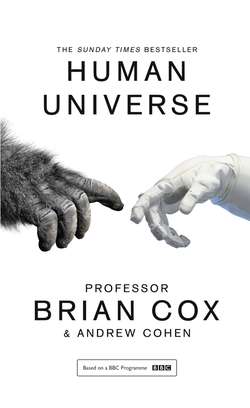Читать книгу Human Universe - Andrew Cohen - Страница 14
BEYOND THE MILKY WAY
ОглавлениеWith the size and shape of the galaxy measured, the question of our place in creation now shifted from the position of the Sun within the galaxy to the nature of the universe itself. If the progress from Copernicus through Newton to Leavitt and Shapley appears relatively fast, certainly when viewed in the context of the glacial progress throughout the 2000-year dominance of Aristotelian thinking, then the decade that followed Shapley’s determination of the size of the Milky Way might be described as an intellectual avalanche. The revolution was fuelled from two sides. A new generation of telescopes and the increasingly sophisticated observational techniques developed by astronomers like Leavitt, Hertzsprung and Shapley provided the data, and in parallel theoretical physics experienced a revolution. Claims of revolutions or paradigm shifts have to be made with great care in science – indeed the terminology is quite unfashionable in certain academic circles. But from a physicist’s perspective there is no doubt that physics experienced a revolution in 1915, because in November of that year Albert Einstein presented a new theory of gravity to the Prussian Academy of Science.
The theory is known as General Relativity, and it replaces Newton’s law of universal gravitation. Many physicists regard General Relativity as the most beautiful piece of physics yet devised by the human mind, and we will explore why this is so a little later. For now, let us note that the Big Bang, the expanding universe, black holes, gravitational waves and the whole evocative landscape of twenty-first-century cosmological language began, absolutely, with the publication of General Relativity. The parallels with the Newtonian revolution are clear. Without Newton’s laws, there is no deep understanding of the solar system and the motions of the planets. Without General Relativity, there is no deep understanding of the large-scale structure and behaviour of the universe. But we are getting ahead of ourselves. As the second decade of the twentieth century dawned, the size and shape of the Milky Way galaxy was established, albeit with rather large errors, but the true extent of the universe beyond our galaxy was still hotly debated. Could we, at least, cling to a sort of token pre-Copernican fig leaf and place our galaxy at the centre of the universe? The desire to be special runs deep. The last intellectual rearguard action against our demotion can, rather theatrically, be said to have played out on a single evening on 26 April 1920 in the Baird auditorium at the Smithsonian Museum of Natural History, Washington DC. This is, of course, an oversimplification, but allow me a minute to enjoy the sound of the outraged shaking jowls of a thousand historians of science before I qualify and partially justify this hyperbolic claim.
